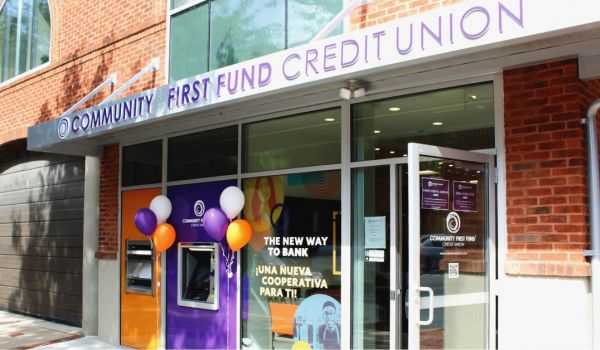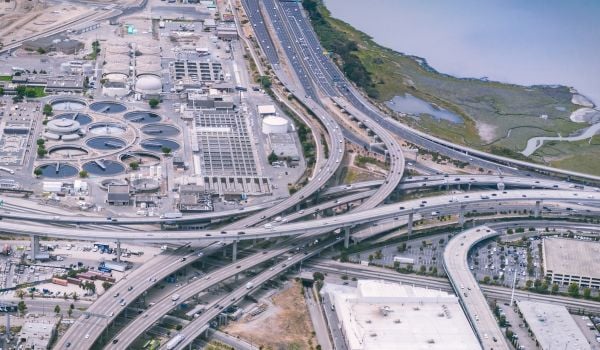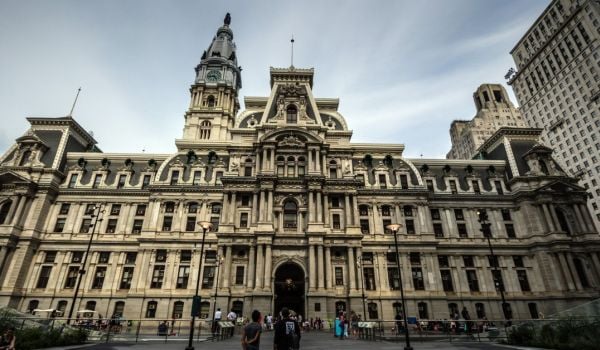David Nikoloff spends his days thinking about real estate and economic development in small Pennsylvania cities that have proud industrial pasts with names you might recognize, like Bethlehem Steel. In a changing global economy, while there’s still a lot of pride in Bethlehem or Lancaster or Reading, there seems to be less and less capital, especially for small businesses. It’s made it hard to bounce back after de-industrialization.
“With the consolidation of banks, some acquired market share and inherited a bank in Lancaster, and they honestly didn’t know what to do with it,” Nikoloff says. “God love ’em, but they knew nothing about south central PA or Berks County.”
Nikoloff is vice president for real estate lending at Community First Fund, a nonprofit loan fund based in Lancaster, Pennsylvania. Founded in 1992, the loan fund has built up a $42.5 million small business loan portfolio, with clients borrowing money to purchase and renovate buildings for everything from barbershops and a barber school, to locally owned grocery stores, restaurants, and cafe-bakeries. As a federally certified community development financial institution, no less than 60 percent of Community First Fund’s loans go to businesses located in low- and moderate-income census tracts.
Lately, like many of his counterparts at nonprofit loan funds across the United States, Nikoloff has been thinking in particular about Opportunity Zones, the new federal tax incentive to invest in low-income census tracts. They’re thinking about how to make it work for smaller cities, as well as what it will take for Opportunity Zone investment to benefit existing residents and small businesses located in these zones.
“We think in our market area, because of lack of knowledge of investors about our area, about the policy, there’s a whole lot of stuff that has to be done in a very short timeframe,” Nikoloff says.
To get the maximum tax benefit allowed under the tax bill, Opportunity Zone investments must be made by the end of 2019. But the IRS still hadn’t finalized its regulations as of mid-March.
Investors are waiting in the wings to pull the trigger on billions of dollars, and when they finally do, there’s nothing in the law that says those investments must lead to businesses hiring existing residents of Opportunity Zones or produce housing that’s affordable to them.
“In some ways it feels like the California gold rush,” says Dan Holmquist, vice president for finance at the Metropolitan Economic Development Association, a nonprofit small business lender in the Twin Cities area. “How many will benefit from it are yet to be determined.”
There are already at least 87 funds with $22 billion in capital committed to Opportunity Zone investment. Nikoloff isn’t counting on much of that to filter down to the “tier 3” cities where Community First Fund works.
“Those funds tend to look at the tier 1 markets — New York, the Bay Area, Atlanta, Charlotte,” Nikoloff says. “People can find those cities on the map, and many of the big players have active investments there already. By and large, those big players can’t find us on the map.”
In theory, the Opportunity Zones legislation was intended to spread benefits far and wide. There are 8,762 census tracts spread out across the country that are certified as Opportunity Zones, including some in Lancaster, Bethlehem and Reading. But there are also many Opportunity Zones in big coastal cities and a few landlocked major cities in the middle of the country, cities with the kind of real estate markets that promise Opportunity Zone investors better returns than in smaller markets, with or without benefits for targeted communities.
Add to that, the Opportunity Zones tax incentive is really geared toward wealthier investors who live in or near those big cities. Only capital gains — profit earned from the sale of stocks or other assets — is eligible for the tax breaks under the incentive, and that’s where wealthy and high-earning households are heavily concentrated.
Instead of relying on bigger players to bring investment, Nikoloff sees opportunities to connect local investors to projects in the smaller cities where Community First Fund works in Pennsylvania.
“We’re going to be talking mostly to high-net-worth individuals with potential capital gains, in our region, who know a little bit about Lancaster, who know a little bit about Lebanon, who know a little bit about Reading,” Nikoloff says. “They know a little bit about the communities, but not necessarily where the opportunities are on the ground right now or how to structure deals. That’s the value we think we bring.”
Whether or not the tax incentive will result in increased investment across all 8,762 Opportunity Zones is one question — whether any investment that does result actually benefits communities is another.
Opportunity Zones resemble previous or existing federal and state programs, like enterprise and empowerment zones (which mostly didn’t produce the new jobs promised for targeted areas), or the New Markets Tax Credit Program. It has the potential to be much bigger than those, but it completely lacks the centralized reporting and compliance process as found under the New Markets program. Opportunity Zones most closely resemble the EB-5 Immigrant Investor program, which has been wildly misused to finance projects that aren’t located in or directly benefiting economically distressed areas as intended.
There’s a huge incentive for Opportunity Zone investors to make investments that drive up property values — if investors hold onto Opportunity Zone investments for at least 10 years, any new capital gains from cashing out those investments is tax-free. That means a flood of Opportunity Zone investment into real estate could result in higher property taxes, higher rents, and the displacement of people and businesses currently residing in the areas the incentive is supposed to benefit.
In the Cincinnati metropolitan area, Joseph Klare is vice president of real estate finance and investments for the Catalytic Development Funding Corporation of Northern Kentucky (Catalytic Fund), which has an $11 million revolving loan fund to help revitalize “core urban” areas. His organization helped coordinate with the Northern Kentucky Tri-County Economic Development Corporation to respond to the state of Kentucky’s request for local input in selecting census tracts for Opportunity Zone designation.
In terms of prioritizing which census tracts were best positioned to facilitate the creation of jobs that would have benefited low-income households throughout the region, “there were probably better tracts that could have been selected,” Klare says, “but there was a limited amount of time to respond based on the legislation.” (See Next City’s Opportunity Zones primer for details.)
Klare points to one Opportunity Zone that wraps around the main Cincinnati airport, including a lot of vacant land as well as an Amazon cargo facility already under construction. “It’s one of those tracts where people might say there was going to be development there anyway,” he says, but Klare points out that the area has a lot of potential for job creation along with proximity to public bus routes and easy drives to low-income communities in the region. He’s hopeful developers can attract companies that will employ people from those low-income communites. Klare also points out an Opportunity Zone area covering downtown Covington, Kentucky, which has more potential to benefit existing residents and businesses. The area is already feeling tension from losing historic properties and rising rents though.
“I think [displacement of people or businesses] is always going to be a concern with any type of capital program,” Klare says. “There’s always going to be bad actors.”
EDITOR’S NOTE: This article was changed to add previously omitted context from Joseph Klare about the Opportunity Zone near the Cincinnati airport.
This article is part of The Bottom Line, a series exploring scalable solutions for problems related to affordability, inclusive economic growth and access to capital. Click here to subscribe to our Bottom Line newsletter.

Oscar is Next City's senior economic justice correspondent. He previously served as Next City’s editor from 2018-2019, and was a Next City Equitable Cities Fellow from 2015-2016. Since 2011, Oscar has covered community development finance, community banking, impact investing, economic development, housing and more for media outlets such as Shelterforce, B Magazine, Impact Alpha and Fast Company.
Follow Oscar .(JavaScript must be enabled to view this email address)


















